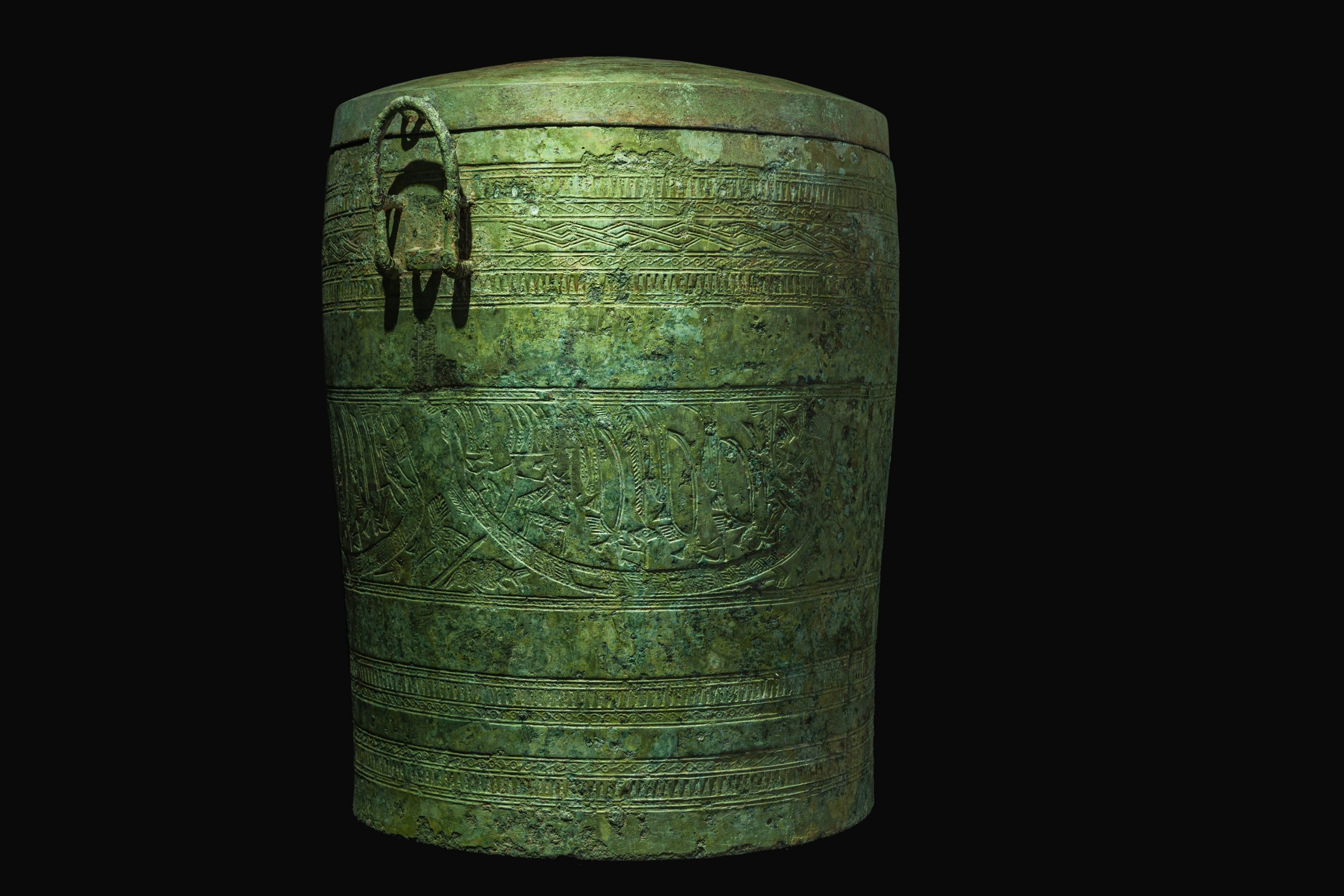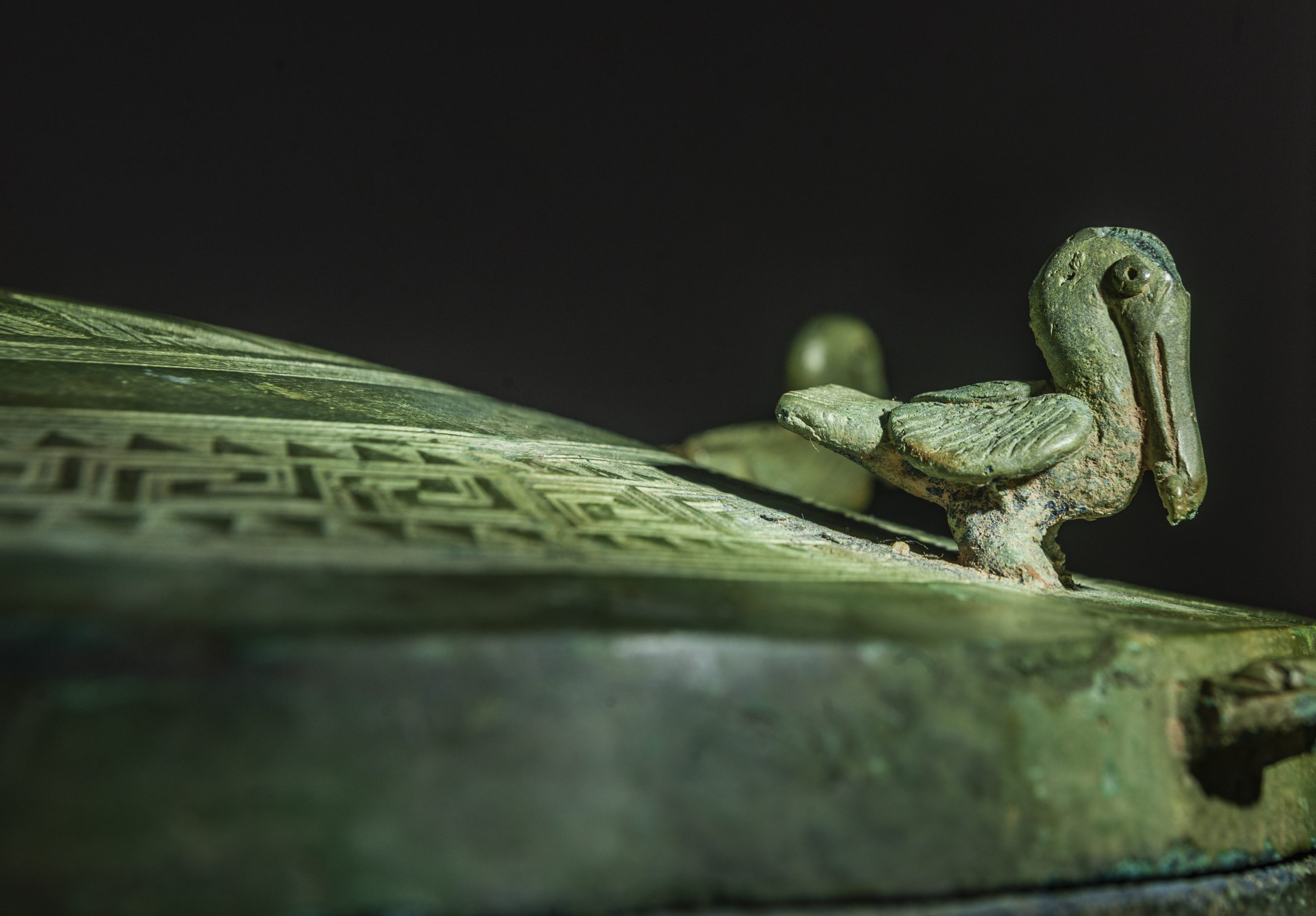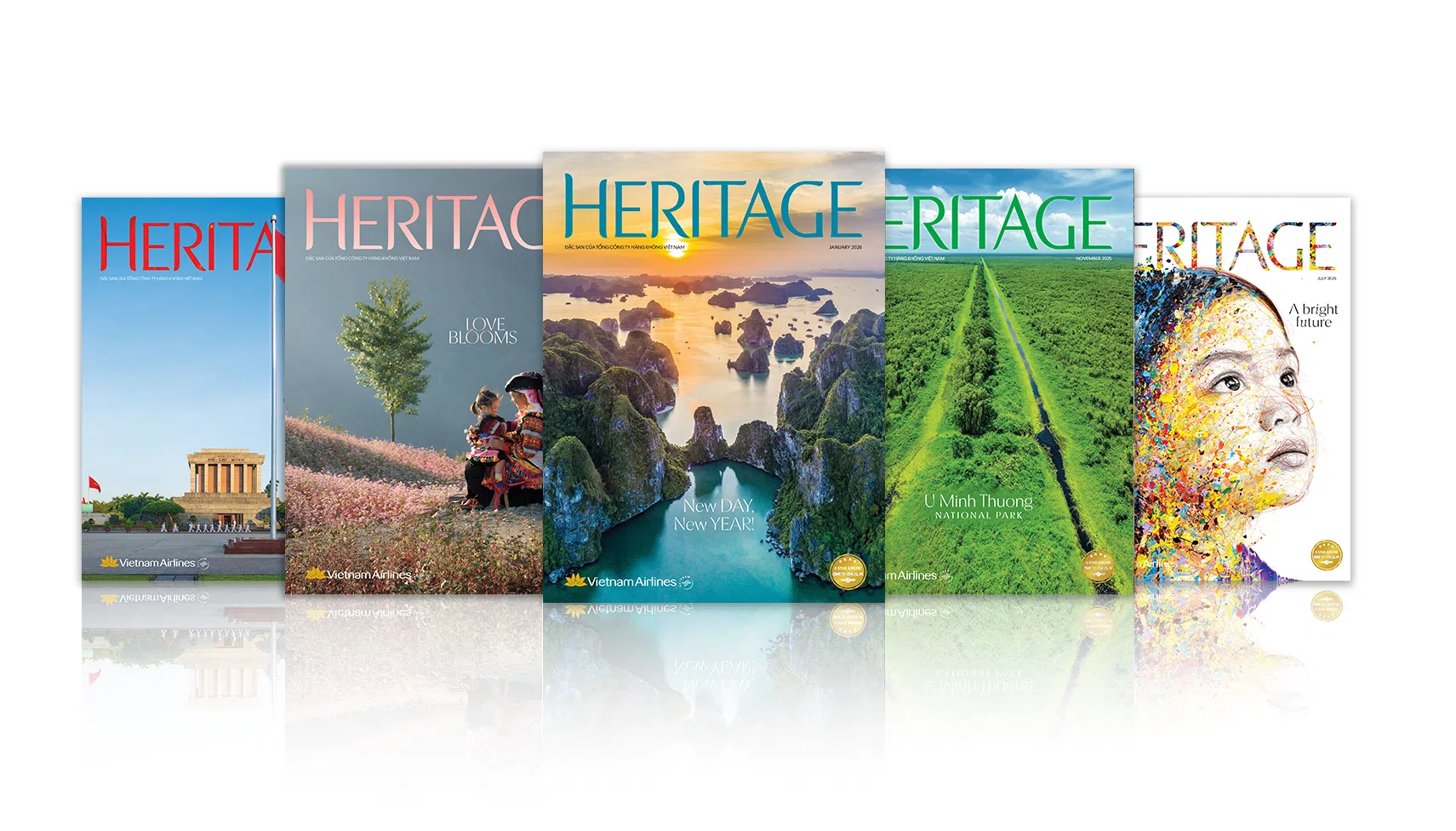Story: Professor Dr. Trinh Sinh
Photos: Ba Ngoc
A century ago, a local from Dong Son village (Ham Rong ward, Thanh Hoa city) discovered a bronze drum and several other bronze artifacts on the banks of the Ma River. This marked the beginning of the discovery and study of the globally renowned Dong Son culture. The Dong Son ancestors of modern Vietnamese people lived some 2,700 – 2,000 years ago.

Studying the Dong Son culture helps us reconstruct a historical picture of ancient Vietnamese people, who farmed paddy rice, fished, conquered the East Sea, and created exquisite bronze drums and bronze jars. Theirs was one of the most advanced civilizations in Southeast Asia and southern China at that time.
With a love of beauty, Dong Son people created outstanding artworks, some of which have survived to this day. We visited the Kinh Hoa bronze collection, privately owned by Mr. Nguyen Van Kinh in Tay Ho district, Hanoi. This collection contains four artifacts classified as National Treasures, including two bronze drums and two bronze jars. This collection alone represents the pinnacle of artistic craftsmanship, unmatched by anything produced in traditional bronze casting villages in Vietnam today.
The beauty of the Dong Son culture is captured in intricate patterns that depict various aspects of the lives of Dong Son people. They worshipped the sun, hence the symbol of a multi-rayed star at the center of their drums, cast in relief. Peacock feather patterns are often found between the central star’s rays. This reflects the beliefs of a rice-farming community, who revered the sun as the source of life of all beings and placed it at the center of their artworks. Surrounding the sun symbol are decorative floral patterns.
The ancients also depicted themselves in festival attire: wearing feathered hats and cloaks made of feathers. Sometimes they are shown dancing with arms spread wide, or rowing boats, hands on their oars. At times, the human figures are vividly portrayed: a man playing a leather drum with a drumstick; standing on a boat’s deck with a long spear; holding a bow in one hand and an arrow in the other; wielding a battle-axe or spear; or preparing to sacrifice an ox. Men and women are shown grinding rice, or as a group, sitting and playing bronze drums. The human figures also vary according to social status: leaders often stand on boat decks, sometimes wearing hats adorned with up to five feathers, while rowers often appear shirtless, wearing only loincloths. Some patterns show people who are about to be executed in sacrificial ceremonies. Completely naked and without feathered hats, they are possibly prisoners or individuals chosen for river-rituals to summon rain.

Some human patterns are stylized into simple curved lines and short dashes, yet they still represent circular motifs with a central dot symbolizing eyes. Many scholars refer to this as the “flying flag” pattern.
Flying birds are a common motif on Dong Son drums. Many patterns depict birds with long beaks, wide-spread wings, and long tails, possibly representing storks. Some birds have large heads, big beaks, and short tails. These may represent pelicans. These ancient people also decorated artworks with common animals, such as oxen with humps, and deer with antlers. Inside the deer’s bodies are dotted patterns that could symbolize sika deer. Other patterns depict long-tailed foxes. Sea creatures were also shown, including jiaolong (a sea dragon from Chinese mythology), and even realistically portrayed crocodiles, fish, horseshoe crabs, and sea turtles, etc.
Stilt houses with curved-roofs are depicted, inside of which are couples with interlocking arms and legs. Round-roofed stilt houses were likely granaries used to store food. Drum barrels are often decorated with six boat motifs linked together, with rowers and steering oars. Additionally, bronze drums and jars often bear motifs of musical instruments like panpipes and drums, everyday objects, and weapons, as well as rice flower patterns on their handles.
Along with ornamental motifs, Dong Son people created sculptures. These include short swords and daggers with handles shaped like humans, elephants, and snakes. The lids of the jars in the Kinh Hoa collection bear the figures of six pelicans. Some later-era Dong Son drums bear four toad sculptures on the drumhead.

The decorative motifs and sculptures of Dong Son people are unique and unlike those of any contemporary culture. Their artistic techniques involved using patterns of short parallel lines, raised dots, serrated motifs, and concentric circles set within geometric floral bands as a backdrop. The designs are stylized and often surreal. For instance, birds are shown flying horizontally but with their wings oriented as if viewed from above. Animal figures might have deer bodies and human heads. This human-deer figure is akin to the Sphinx (human-lion) in Egypt. The artistic style ignores the laws of scale and perspective. For example, a perched bird might occupy the entire length of a stilt house.
Skilled in creating raised and recessed patterns on drums and jars, even though they sculpted with a single material like bronze, these ancient artists were able to create the effect of light and dark hues in their designs.
More than 2,000 years ago, Dong Son people left behind a priceless heritage of artworks, contributing to the formation of Vietnam’s national identity.










